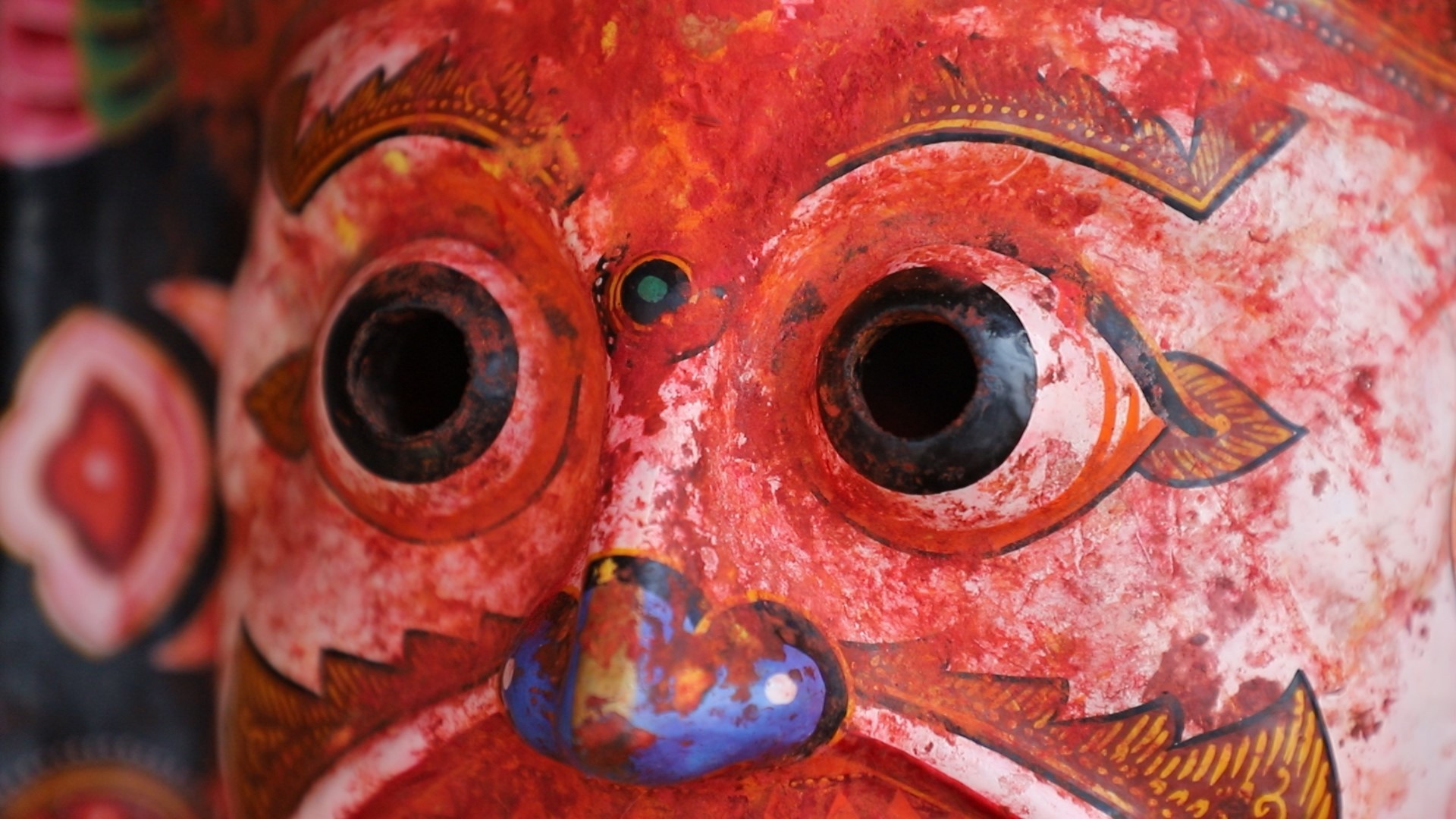
Research by: Priyanka Bahadur Chand
Image credit: Artree Nepal
The anthropomorphic wooden sculptures of the Karnali region have many names, in Mugu they are colloquially referred to as dadyé, and more formally as mahakal, in Jumla they are often called dhaulé. Carved out of Himalayan cedar and pine, these sculptures have a restrained quality. The soft and brittle nature of the wood results in carvings that are simple, poised, and rustic. More sturdy sculptures are sometimes carved out of the Himalayan birch. Travelers and researchers to Karnali have often documented and remarked on the peculiarity of this art form and its ubiquity within the region.
The dadyé serves many purposes. Primarily a protective figure, these statues are commissioned by households to mitigate potential harm from evil spirits and ill-wishers. Often the statues are made by household members themselves. To make it visible, the figure is placed on the roof and a copper alloy trident is inserted atop the head of the dadyé. Contemporary examples are almost exclusively made of wood and some rare examples exist in stone and metal.
In temples and shrines, these statues are offered to local deities when certain wishes or desires are fulfilled. Devotees either make or commission these statues. Dadyé offered to temples are at times larger than the ones found atop roofs. In particular, they can be found at the entrances to the shrines of the deity Mashto. The art practice is integral to the indigenous belief system of Mashto, a God who is channeled in special rituals by local shamans known as dhamis. The placement of wooden sculptures at shrines and places of worship, such as forests and stone spouts indicate loci of power and importance within the local landscape.

Similar wooden sculptures to dadyé are also placed at bridges, locally known as sangu. These wooden cantilever structures are constructed communally by villages, the wood is usually of the Deodar cedar. The pillars and support struts of the bridge are decorated with wooden carvings and sculptures. At times, anthropomorphic figures were offered at the entry and exit points of bridges. In the twentieth century, such sculptures then came to represent specific figures in Nepali history such as kings, queens, politicians, and soldiers. The Sinja Valley in Jumla is dotted with such richly decorated sangus, of particular repute are the works of Kalo Tiruwa in the village of Chiudi.
While dadyé has distinct cultural significance in the Karnali region, the craftsmanship to make these sculptures is at the risk of being lost. With little to no financial incentive and recognition, artists in Karnali continue the practice more so as a spiritual and religious duty to their community. This is a startling reality considering the value of these sculptures outside the region.

Villagers in Jumla remark that it is now difficult to sight a dadyé that is more than a decade old. These wooden sculptures are frequently stolen from people's homes, temples, as well as bridges and find their way to Kathmandu in the bustling tourist quarters like Thamel and sold for large sums of money. Statues are then transported to European and American markets, where further profit is made from sales, usually being sold for upwards of a thousand dollars. Large collections of artworks from Karnali have been amassed in both the United States and France. Works from Nepal are not only smuggled but also inadequately presented in galleries, predominantly being exoticized as “tribal” or “ancient” art. In this global trade, the artists from Karnali not only remain nameless but are also discarded in the lucrative market where middlemen profit from selling their art.
Despite the odds, the artists in Karnali persevere to preserve their tradition. Most carvers come from the Dalit community, some are self-taught, and others learn the craft from their parents and elders. While some profit from commissions from locals, most artists continue to make dadyé as a form of devotion to local deities or responsibility towards their larger village kin networks.

Nanda Lal Bhinyal from the village of Duma in Mugu is one such artist. He started carving sculptures at the age of 14. After school, he would observe his father who was a carpenter. Rather than being instructed, Bhinyal had to look and learn. Through practice, he became comfortable with the tools of carpentry. While he would like to support his family with his skills, he does not profit much from making dadyé. Working as a carpenter on construction sites provides him with better opportunities, although his heart is still in art.
In Karnali, a dadyé is valued for its spiritual importance but these wooden sculptures are a part of the living heritage of local communities in the region. The belief in its protective powers plays an invisible social function of creating resilience and community cohesion. The uniqueness of each dadyé is a product of the interpretation of the artist and their response to social, environmental, and economic conditions. For artists like Nanda Lal Bhiyal, making dadyé is not just a form of artistic/cultural expression but also devotion to his spirituality and community, and his incentive to continue the practice comes from the realization of these values.
While dadyé artists make little to no profit, the prominence of these wooden sculptures outside the region evidences their potential economic value. If artists like Nanda Lal Bhiyal were given credit and compensated for their craftsmanship, then perhaps this living heritage of the Karnali region would not be at the risk of being lost.

















Designed & Developed by: Curves n' Colors | Visual identity by: Wkshps




